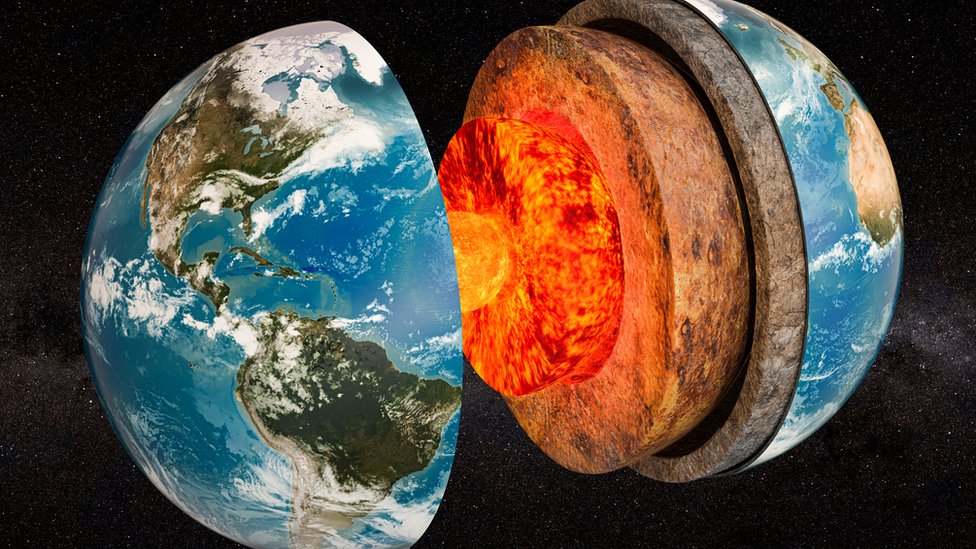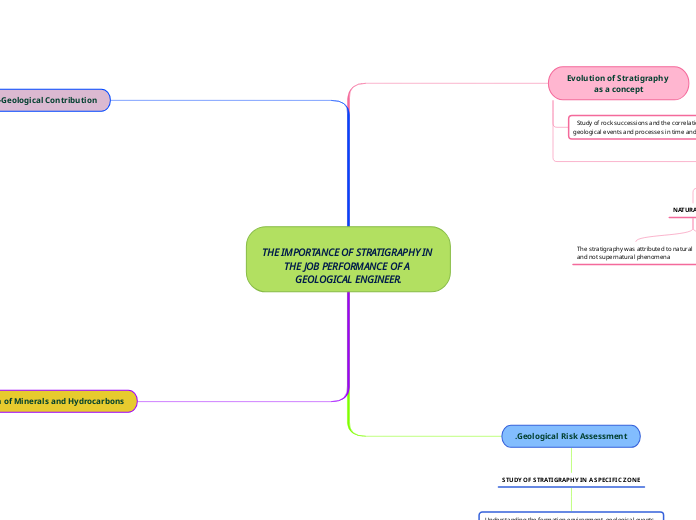
THE IMPORTANCE OF STRATIGRAPHY IN THE JOB PERFORMANCE OF A GEOLOGICAL ENGINEER.
Evolution of Stratigraphy
as a concept
Study of rock successions and the correlation of
geological events and processes in time and space
Fundamental science of all geological studies, allowing to reconstruct the sequence of events in the history of the Earth and the evolution of life on Earth.
NATURALISM
The stratigraphy was attributed to natural and not supernatural phenomena

The word fossil is attributed to:
Remains of living organisms
Minerals
Crystals
Rocks
Geological strata
THE PRINCIPLES
The appearance of fossils was
attributed to a "Plastic Force"

"Re metallica" of Georgius Agricola
Rocks are deposited in distinct layers or strata, and that these layers occurred in a constant order and could be traced over a wide area.

Alberto magnus and
Leonardo Da Vinci
They were the first to correctly
speculate on the nature of fossils.
Remains of ancient organisms that once lived.

Nicholaus Steno
He pointed out the true origin of the geological strata and fossils.
THE DILEMMA OF CATASTROPHISM VS. UNIFORMITARIANISM AND GRADUALISM
The organic nature of fossils was decisively established as remains of ancient beings and the inorganic theory was abandoned

William Smith
He was the first to recognize the importance of fossils for the historical investigation of the Earth's strata and introduced the principle of faunal succession.
Modern Geology by James Hutton

"Earth Theory"
The earth must be millions of years old
20TH CENTURY: THE ERA OF
APPLIED STRATIGRAPHY

Tectonic plates
The first theory emerges that the South American and African continents were once linked by humboldt
Harry Hammond Hess proposed the theory of seafloor spreading or plate tectonics.
Wegener's theory of continental drift
Geochronology
Absolute dating of the rocks
Determination of the temporal sequence of geological events in the history of the Earth
Magnetostratigraphy
Change of polarity in the rock
Facies stratigraphy
Combined lithological and paleontological features of a stratigraphic section by geologist and paleontologist Amanz Gressly
Quantitative stratigraphy
Sequence stratigraphy
Considered a fundamental tool in the study and interpretation of the sedimentary filling of a basin
.Geological Risk Assessment
STUDY OF STRATIGRAPHY IN A SPECIFIC ZONE
Understanding the formation environment, geological events, and occurrences.
Enables the professional to identify and assess geological risks with the aim of conducting infrastructure planning and ensuring public safety.

Scientific-Geological Contribution
DATA COLLECTION AND STRATIGRAPHIC EVALUATION
High-impact scientific publication of stratified bodies
Provides information such as:
Lithological description and identification (LITHOSTRATIGRAPHY)
Recognizing the environmental complexes in which rock materials were formed.
Assessment of Layer Ages
Formal recognition of rock unit

Exploration of Minerals and Hydrocarbons
USE AND APPLICATION OF STRATIGRAPHIC KNOWLEDGE
It will allow locating and evaluating potential mineral deposits and hydrocarbon reserves.
